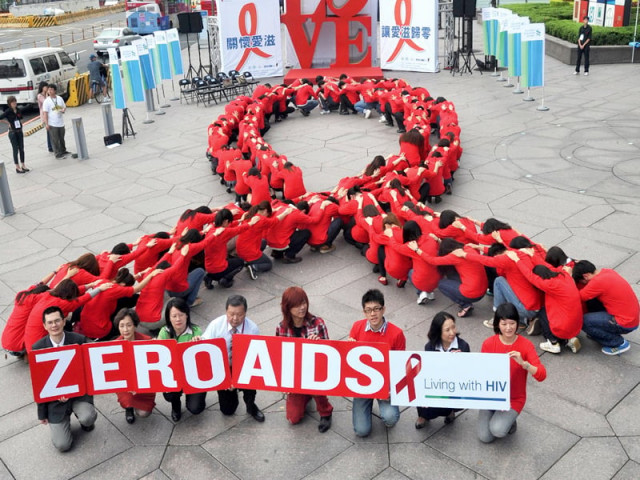‘Getting to Zero’ appears unlikely for Pakistan
Government’s awareness campaign fails to curb rising number of cases.

Human Immunodeficiency Virus: three words you never want to hear from your doctor.
HIV attacks the body’s immune system, leaving it defenceless against infections. While being HIV positive doesn’t necessarily mean a person has AIDS, the virus can, however, cause the fatal disease.
The unfortunate thing is, owing to its financial crunch, the government’s awareness campaign over the past two years has failed to curb the number of HIV/AIDS cases in Pakistan. Not only have they not been able to control the disease, but the number of patients falling victim to the deadly infection is rising at an alarming rate. With World AIDS Day falling on December 1 each year, this year’s theme is: Getting to Zero. However, with the unfortunate statistics related to the disease in Pakistan, it seems unlikely that the country will be able to meet that target any time soon.
At present, 5,000 HIV patients are registered at treatment centres throughout the country, according to the National AIDS Control Programme (NACP).
According to estimates, however, at least 79,000 cases go unreported. Majority of these cases include injecting drug users (IDUs) and sex workers, who are at the highest risk of contracting HIV. And with most of the IUDs being married, the disease is often passed on to their spouses, who in some cases transfer it to their unborn child.
Considering the current circumstances, it seems highly unlikely that Pakistan will be able to meet its Millennium Development Goals, 2015 target for HIV/AIDS, sources within NACP said.
Another alarming factor contributing to the rising number of cases is health practitioners in rural areas. Most of them aren’t informed enough about the disease, and often times, in order to save Rs10, they will re-use a syringe several times, without taking into account the fatal consequences, the source added. What makes this situation worse, he said, is that there’s no one to monitor the situation.
Financial constraints, along with the health ministry being devolved have caused the number of HIV/AIDS cases in the country to skyrocket, NACP National Programme Manager Dr Sajid Ahmad told The Express Tribune.
Ever since mid-2010, the World Bank, which was a major contributor, has also stopped it’s funding for the programme, Dr Ahmad said.
Documentary screening
The largest demographics contributing to the spread of HIV/AIDS are immigrant workers, according to a documentary shown at an awareness session organised on Wednesday by the Chanan Development Association (CDA) at the Alhamra Arts Council in Lahore.
The documentary titled: “Ajanay Main” highlighted the work of Nazeer Maseeh and his NGO which works towards providing a support system and treatment to AIDS patients in Pakistan. Maseeh, who was diagnosed with HIV/AIDS himself in the 1980s, is one of the earliest diagnosed HIV/AIDS patients in the country.
(WITH ADDITIONAL REPORTING BY AROOSA SHAUKAT IN LAHORE)
Published in The Express Tribune, December 1st, 2011.



















COMMENTS
Comments are moderated and generally will be posted if they are on-topic and not abusive.
For more information, please see our Comments FAQ